Off-grid living in the North American wilderness
Meet the people living off-grid
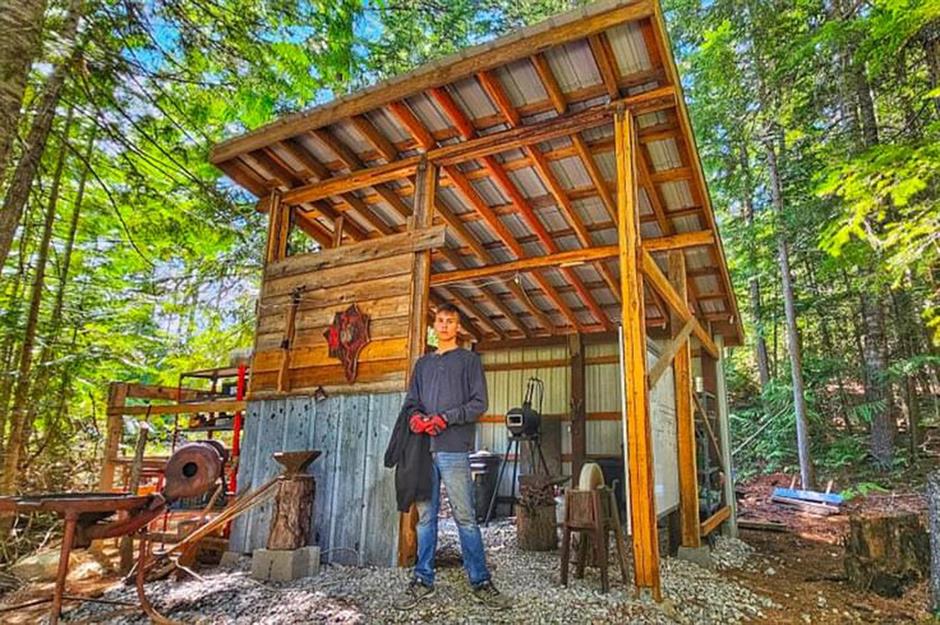
Have you ever wondered what it would be like to leave the rat race behind and live off-grid? We take a look at what it’s like to drop off the map in the beautiful North American wilderness and meet the people living a unique way of life.
From homesteads and farms from Missouri to Alaska, click or scroll to explore these incredible homes...
Ariel’s tiny house in Wyoming
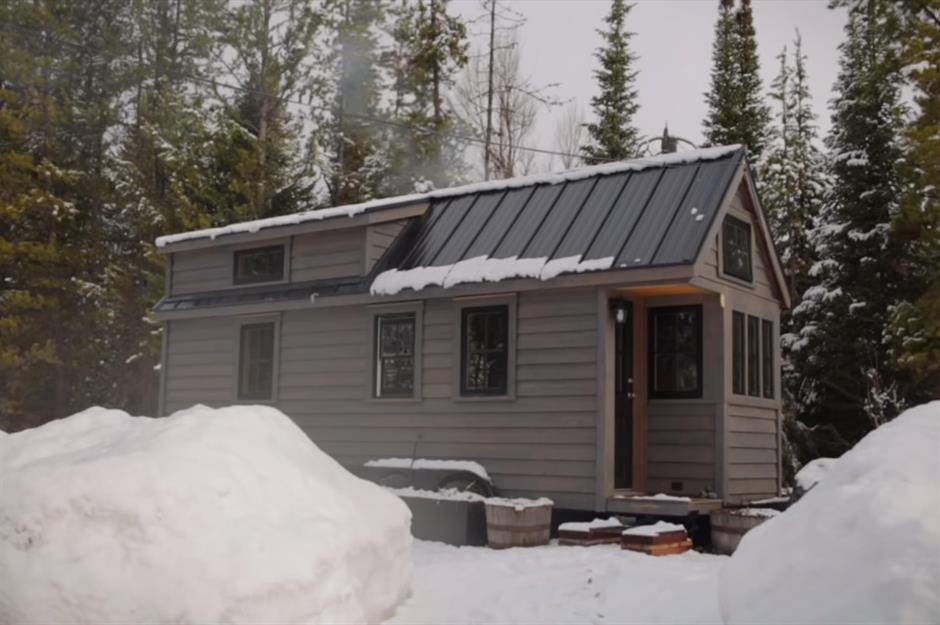
Nestled high in the Wyoming mountains, a little over 6,000 feet (557m) above sea level, this miniature cabin on wheels belongs to Ariel McGlothin. It's affectionately named Fy Nyth, which is Welsh for 'My Nest'.
Since 2014, she's been living a minimalist off-grid lifestyle, which she shares on her YouTube Channel. She shared a tour of the tiny home in 2018 with Tiny House Expedition.
Ariel’s tiny house in Wyoming
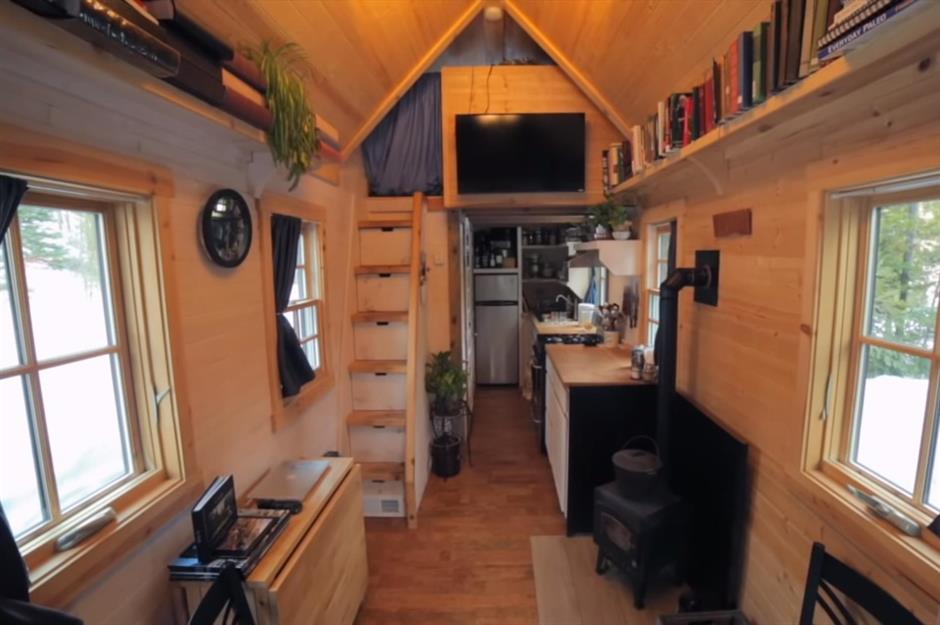
Now living on a larger homestead, Ariel began her wilderness living experience in the tiny house, which she still maintains.
The layout of the tiny home was cleverly designed to make the most of the small space. It's cosy, but Ariel had everything she needed. The snug kitchen features a bank of countertops for food preparation and utilises an external propane gas tank for cooking.
The rest of the appliances run on electricity generated from solar energy, making the pocket-sized property relatively green to run. What's more, Ariel splits her wood for heat, carries water by hand, uses a composting toilet and grows as much of her food as possible.
Ariel’s tiny house in Wyoming
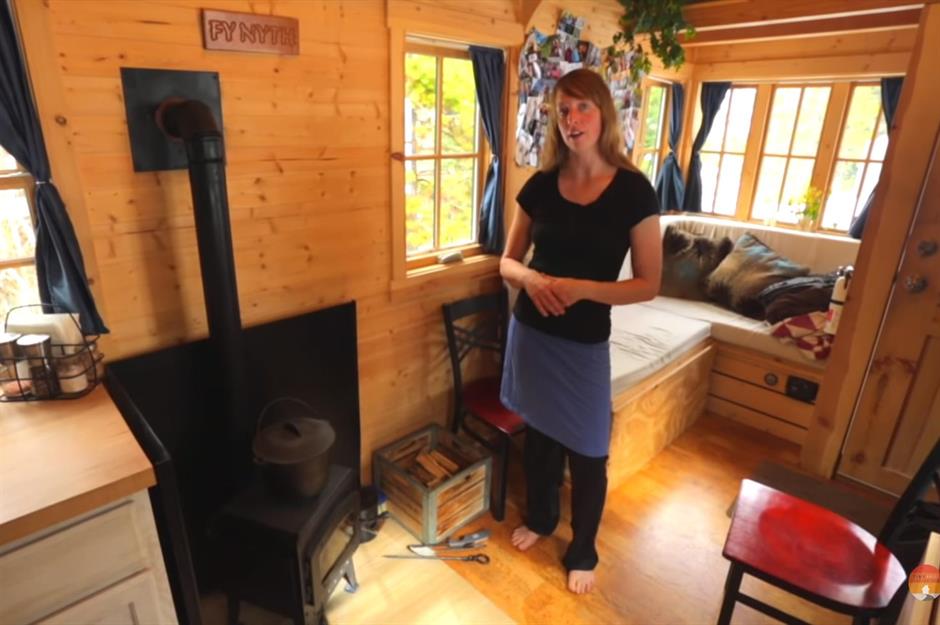
Every space in the tiny house has to work double-time due to the home's petite space. For instance, Ariel’s sitting area quickly transforms into a double guest bed – great for accommodating visitors.
Storage is plentiful and in addition to useful shelving tucked into the eaves, there's also extra space beneath the seating area. The dining table even folds away when it’s not in use
Ariel’s tiny house in Wyoming

Keeping the home running is no easy task, especially when the Wyoming weather can be severe in winter. Ariel must continually shovel the snow from around the house to keep vents clear to allow propane fumes to escape.
Despite the small size, the cabin has a separate sleeping area. Overnight, Ariel climbs up the stairs to her snug, loft-style bedroom. The sleeping space is surprisingly spacious, housing a double mattress and more storage cabinets at the foot of her bed.
Ariel’s tiny house in Wyoming
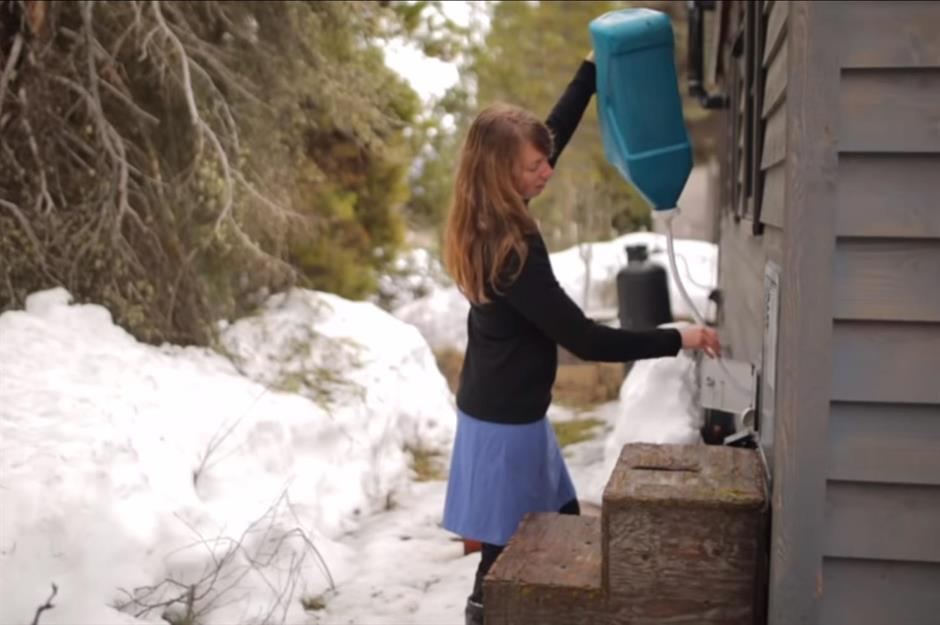
To provide her home with running water, Ariel must fill service tanks from outside her house, where she also has a swing set and barbeque to enjoy in the warmer months.
When not keeping her home in order, she enjoys spending her time outside hiking, backpacking, gardening, and photographing the natural world.
You can read more about life in the tiny house on Ariel's blog.
A self-reliant log cabin in the Canadian wilderness
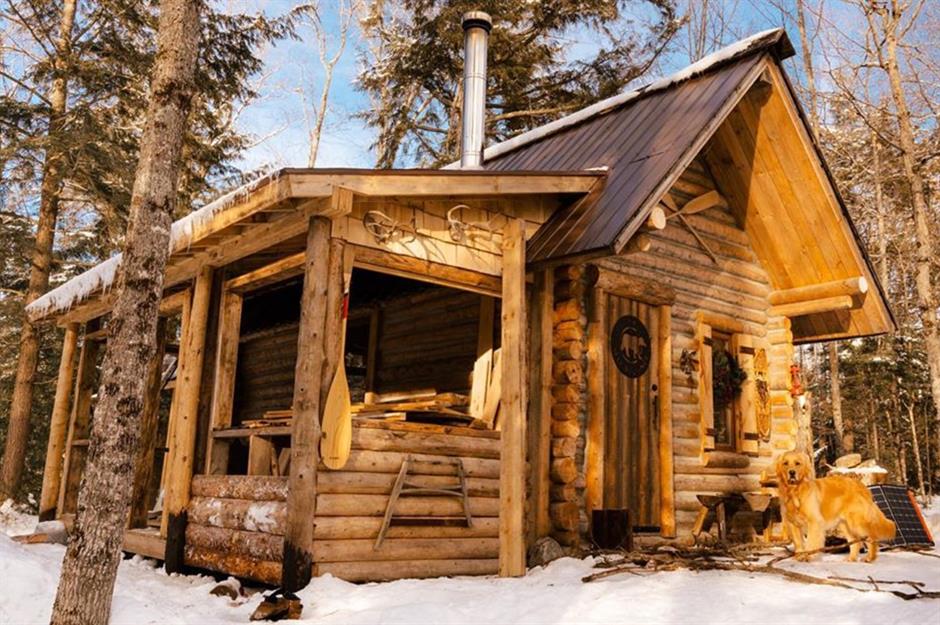
Deep in the Canadian wilderness, you’ll find this picturesque log cabin – home to blogger, self-reliance educator and photographer Shawn James, as well as his dog.
Shawn made the move away from the city to enjoy a more simple life, free from the stress that he associates with material possessions.
A self-reliant log cabin in the Canadian wilderness
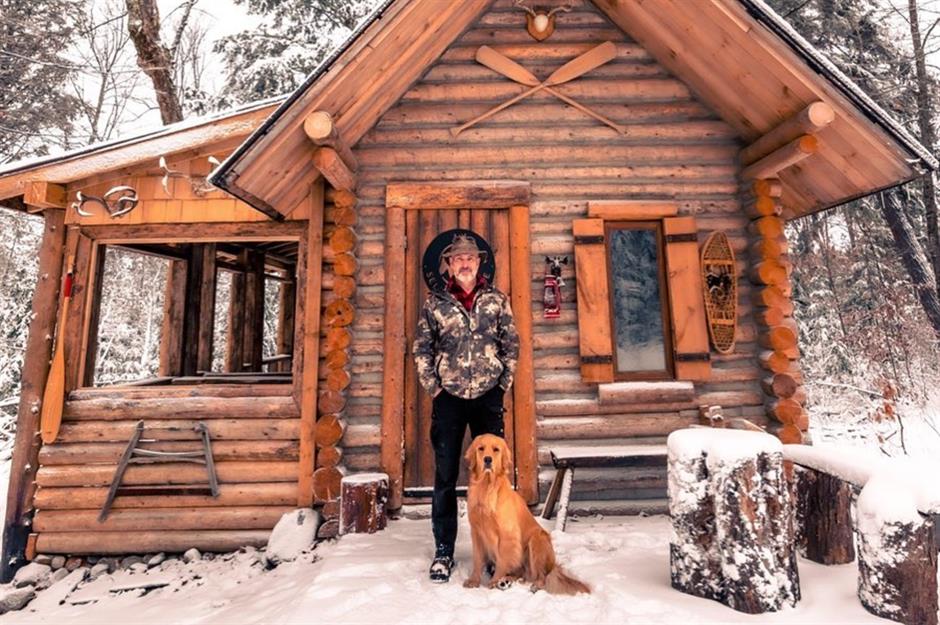
After spending time learning traditional skills, Shawn built his cabin from materials he harvested himself from the forest, using mostly hand tools.
Since starting this venture in 2017, he has continued to document his progress on his YouTube channel and blog. He’s even added an outdoor kitchen, outhouse, woodshed and sauna!
A self-reliant log cabin in the Canadian wilderness
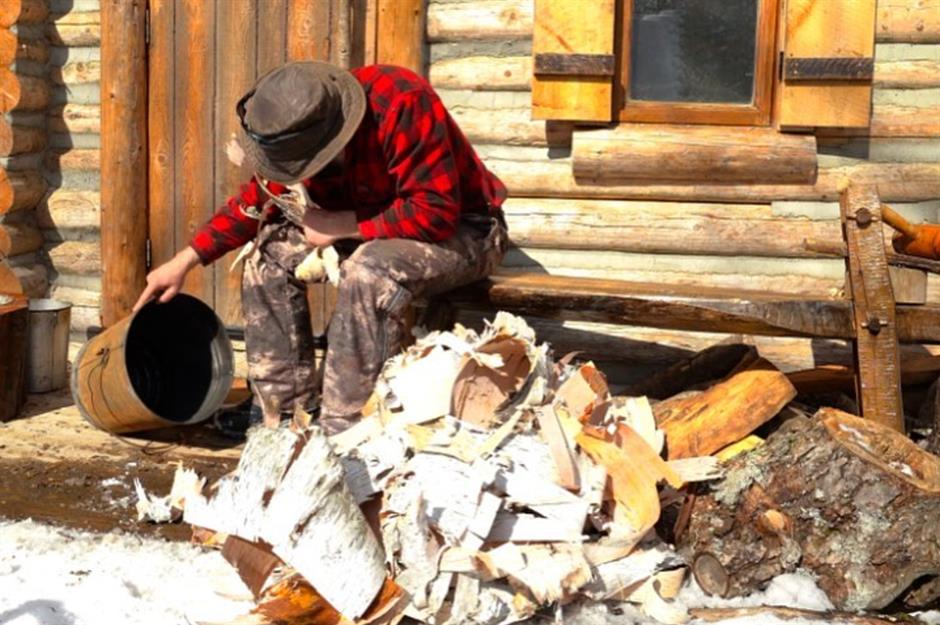
While it may look idyllic, living off the land in such extreme conditions isn’t without hard work. Shawn spends much of his time foraging, fishing, hunting and chopping firewood.
Here, he is pictured making birch tar and preserving bear meat before spring begins.
A self-reliant log cabin in the Canadian wilderness
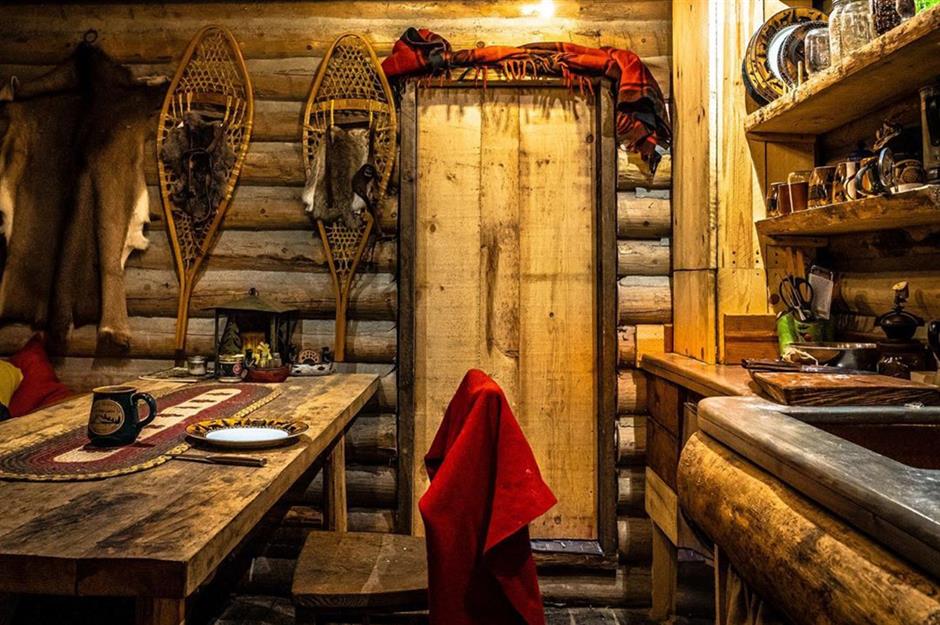
Inside, the cabin is small but cosy, with furniture crafted from traditional materials and building methods. The cabin uses solar panels for power but has no running water – instead, it’s a continuous task for Shawn to collect and purify it.
On the wall, you can also see snowshoes that are vital for getting around in the Canadian forest’s deep snow.
A self-reliant log cabin in the Canadian wilderness
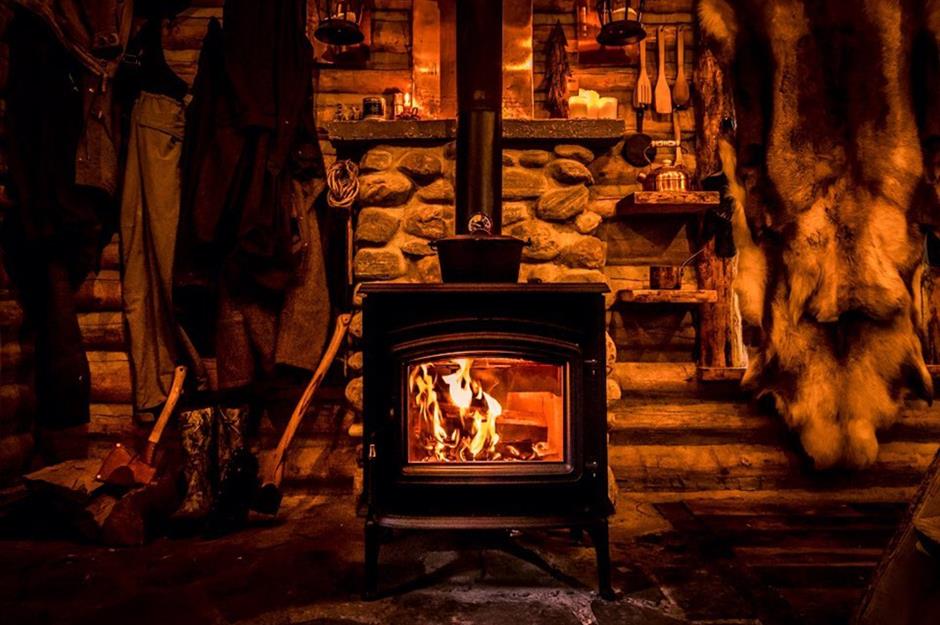
A log-burning stove and animal skins make the cabin feel warm and inviting. But the stove isn’t just important for comfort – it’s what Shawn uses to cook food indoors!
When the weather permits, he also enjoys cooking outside with an outdoor kitchen he set up for the purpose.
An off-grid Northeast Missouri homestead
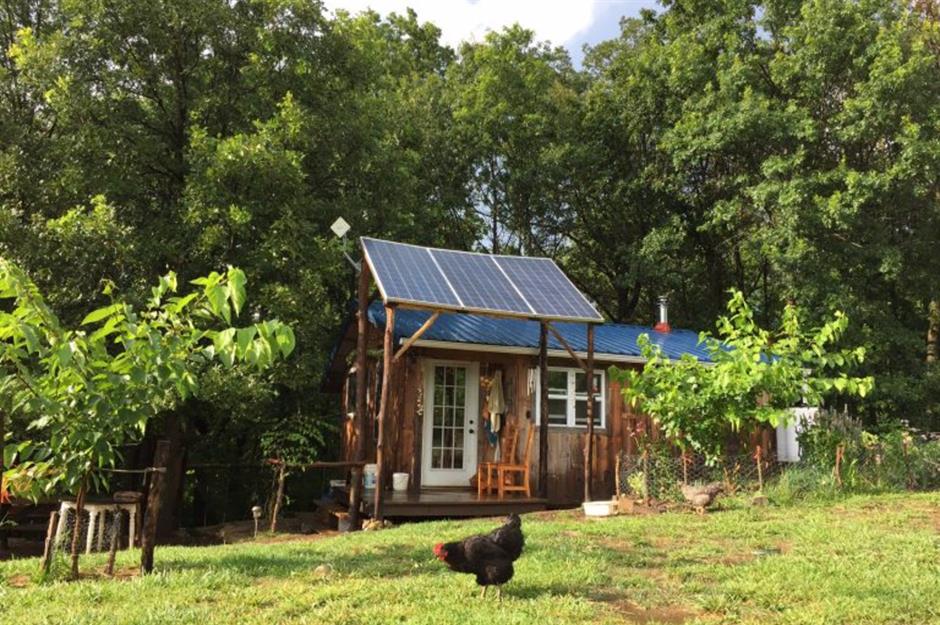
With land cheap and building codes lenient, Northeast Missouri seemed like the perfect place for Teri Page and her family to build an off-grid homestead.
With over a decade of experience in self-sufficient living and some carpentry skills under their belts, they began building their homestead from scratch in 2013, documenting their progress on Teri's blog, Homestead Honey.
An off-grid Northeast Missouri homestead

Before they installed solar panels, the family spent a year and a half living without electricity and using rainwater catchment and a pond in place of running water.
Initially, they planned that the tiny house would eventually transition into a guest space or office. But once the 350-square-foot home was complete, they loved it so much that they decided they wanted to live in it themselves!
An off-grid Northeast Missouri homestead
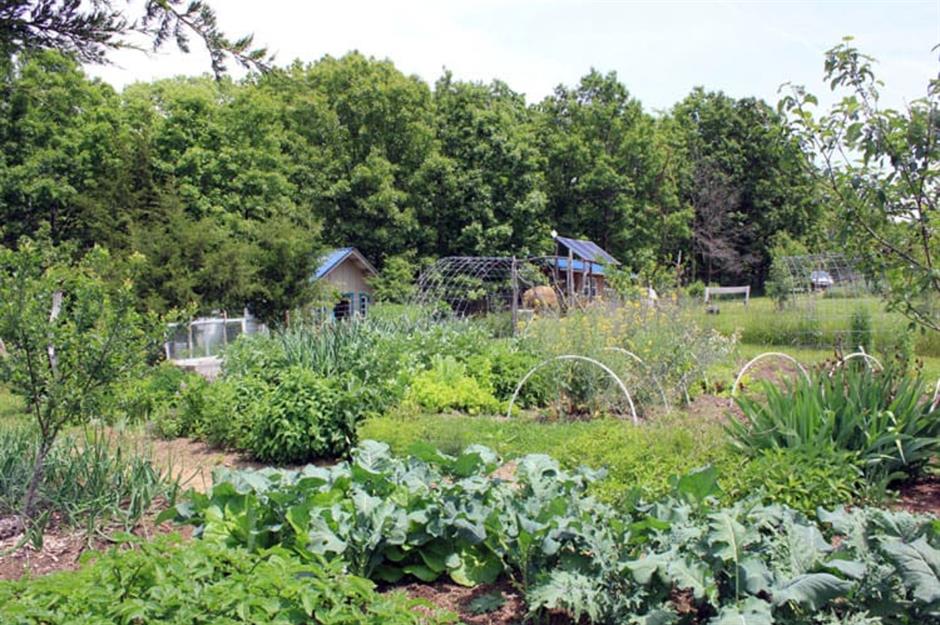
It took the family six years to build up their homestead from scratch. As well as growing organic gardens and food forests, they constructed features such as a root cellar and outdoor pizza oven.
The property sits on 10 acres of land, so there’s lots of opportunity for growing produce and plenty of space in which to store it, from a canning kitchen to a root cellar and barn.
Plus, the family’s land is within the rolling hills of the Bear Creek Community Land Trust – 184 acres of community land with shared pasture, forest, ponds and wild spaces for them to enjoy.
An off-grid Northeast Missouri homestead
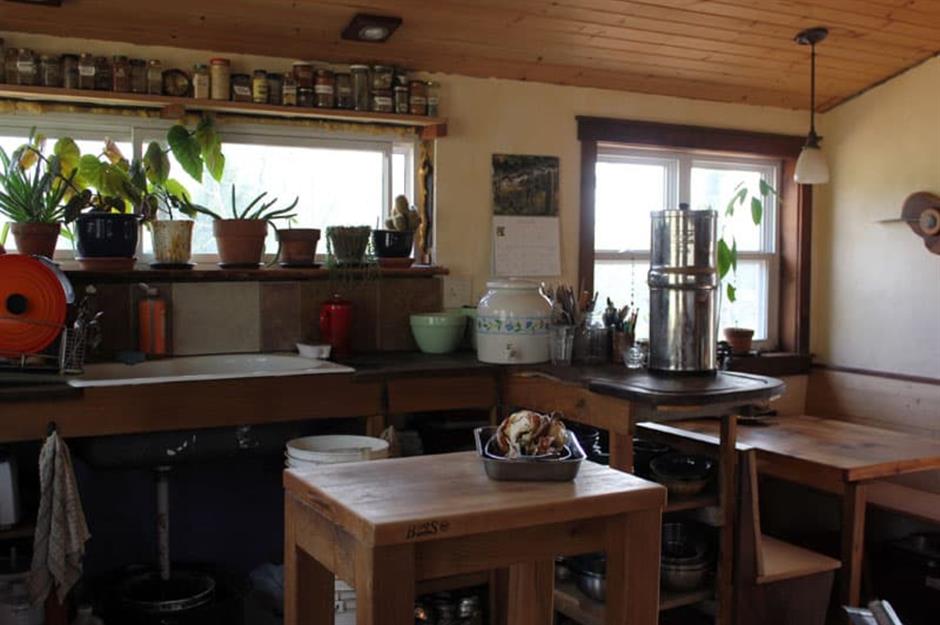
In the bustling family kitchen, there are signs of the family’s self-sufficiency everywhere you look, with jars of preserves lining the shelves.
With four people sharing just 350 square feet (32.5sqm), the family is together a lot and has grown very close.
After all, Teri and her husband both have home-based businesses and they homeschool their children too!
An off-grid Northeast Missouri homestead
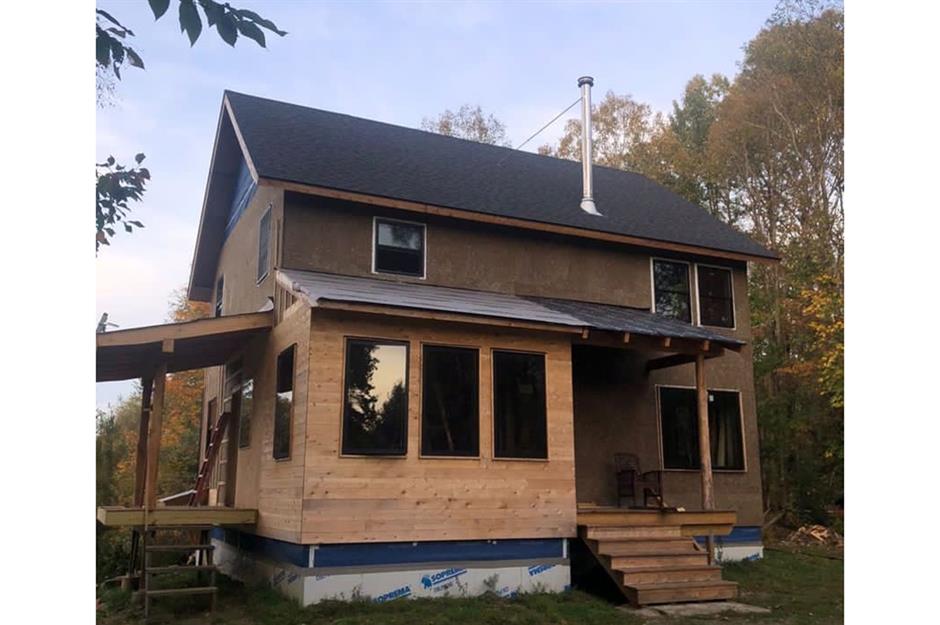
After many happy years spent on the homestead, Teri and her family moved on to the next exciting off-grid adventure!
They have left their Missouri cabin, which is in the care of the Bear Creek Community Land Trust, and are currently working on a new off-grid cabin (pictured here) in Vermont.
A cabin for seven in British Columbia, Canada
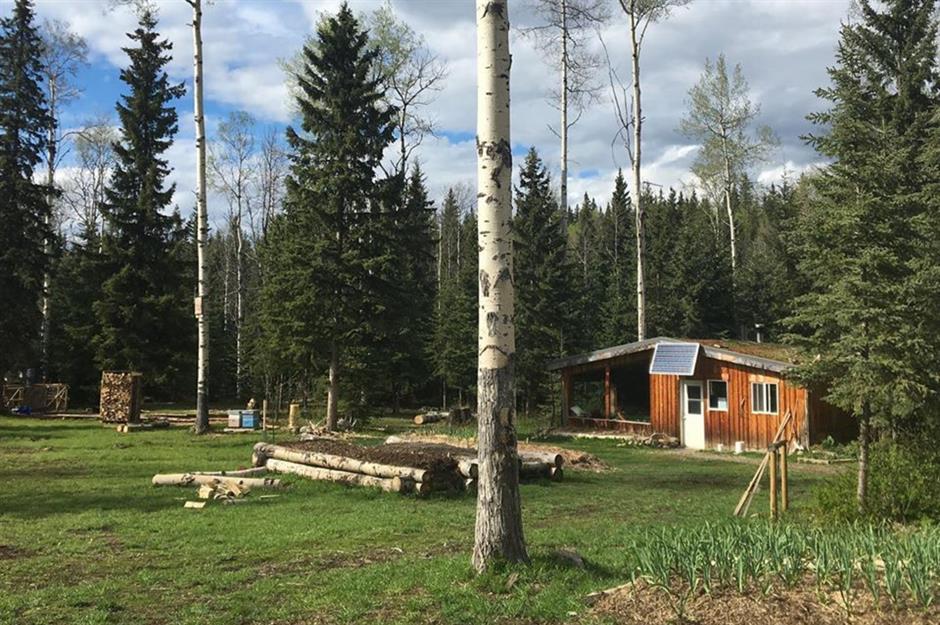
After growing tired of the demands of modern suburban life, Jeff and Rose Burkinshaw decided to leave it all behind in favour of self-sufficiency. They purchased a remote, 40-acre plot of land in a forest 500 miles (8046km) north of Vancouver.
And it’s here, in an unassuming log cabin, that they now live with their five daughters.
The family lives entirely off the land, growing their food, foraging and hunting animals such as moose and birds. The five girls play a large part in the family’s survival, each learning to hunt once they reach the age of 10 and then learning to weld at 12.
A cabin for seven in British Columbia, Canada
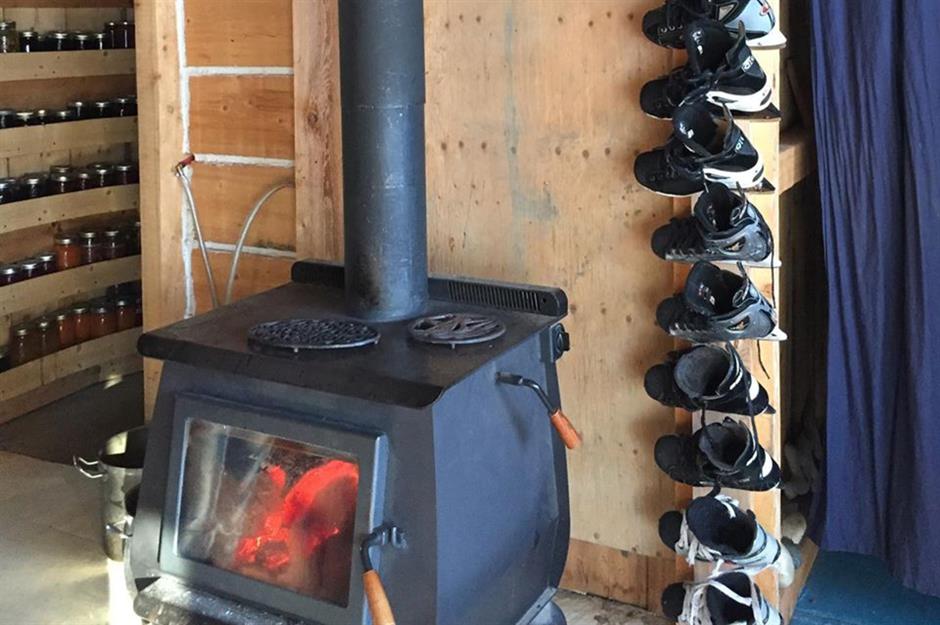
The Burkinshaws’ home has solar energy and log burners but no running water. Instead, rainwater gets collected and stored underground before being brought into the house in buckets.
It’s then heated on the wood burner for washing or filtered using a Berkey filtration system before drinking.
A cabin for seven in British Columbia, Canada

With exposed beams, plenty of books on show and a colourful hammock, the family’s cabin is rustic but homely. The main difference between this and the average modern home is the bathroom; a three-sided outhouse with views over the forest!
Thankfully, two indoor compost toilets are also available during the coldest months – particularly important given the typical two-metre snowfalls and below-freezing temperatures of Canadian winters.
A cabin for seven in British Columbia, Canada
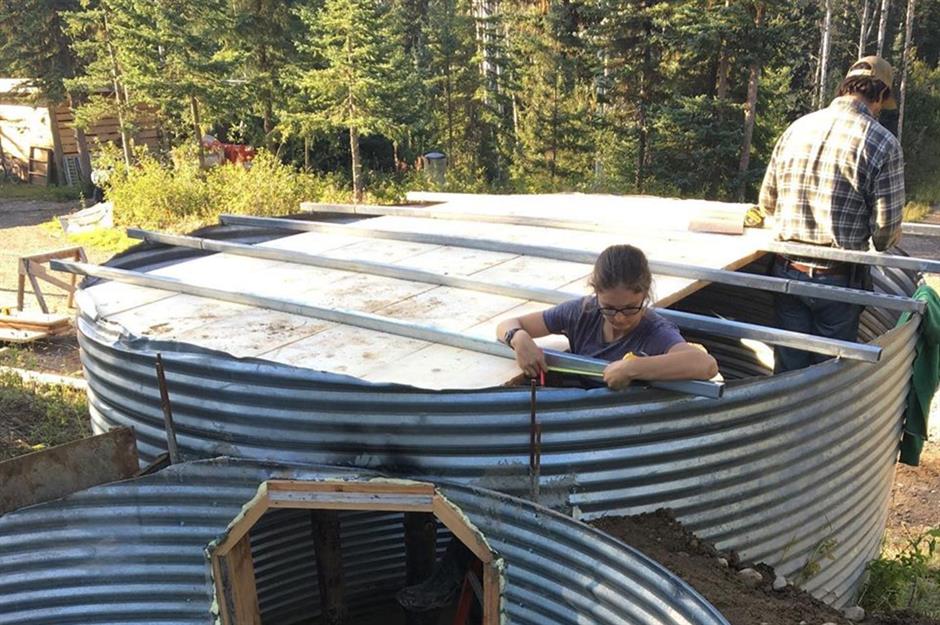
The family’s five daughters are homeschooled using an online interactive schooling programme. But once they finish school at lunchtime, they have plenty of free time to do chores, including contributing to the building of family projects like this root cellar.
The two older daughters even built their own house on the family’s land, all of which the family documents on their YouTube channel and website.
A cabin for seven in British Columbia, Canada
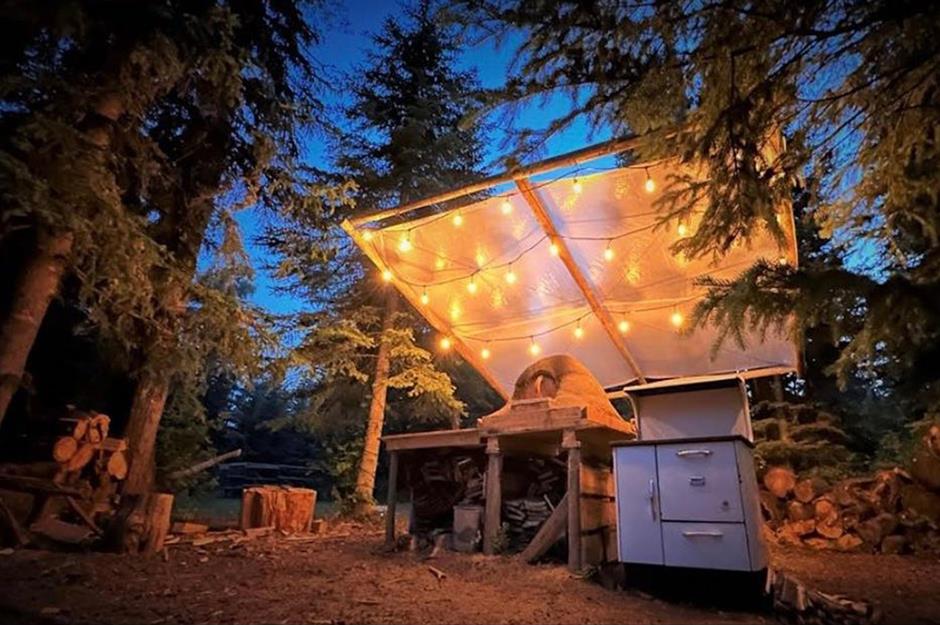
Keen to make the most of the great outdoors, the family built their own dreamy, wall-less outdoor kitchen.
Complete with a suspended retractable roof, LED fairy lights, and an ancient family pizza oven, the kitchen makes the perfect place for summer gatherings, and blends almost seamlessly into its woodsy surroundings.
A family living in the mountains of North Idaho

Meet the family who have built not one, but two off-grid homes. Nikki Mulder and her husband, who met in the armed forces, decided to swap modern-day pressures for a life off-grid with their two young boys – a journey that Nikki has documented in detail on her Instagram profile.
Deep in the mountains of North Idaho, the family designed and built this gorgeous chalet, spending the first year living with no electricity other than a small generator they used for power tools.
Over time the property got some upgrades, including solar power and a backup generator, although Nikki says that having lived for so long without electricity, they use a lot less than most families would. They only had 200W worth of panels on the chalet.
A family living in the mountains of North Idaho
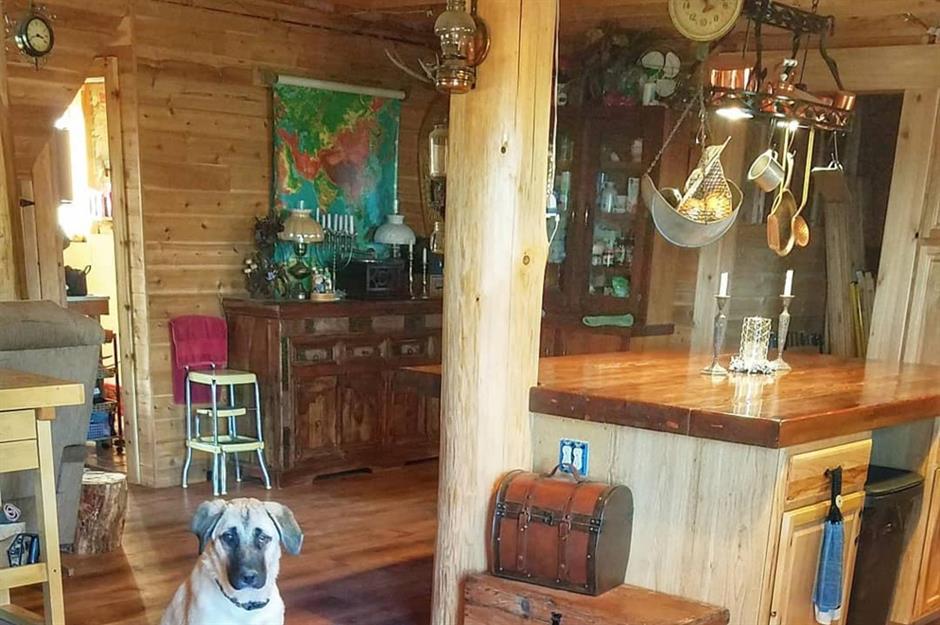
The family kitchen became a truly social space and had all the mod-cons you’d expect from a 21st-century home – other than running water. The family keeps hens and female ducks, laying between them roughly 10 eggs a day.
They also keep their own beehives and grow some fruits and vegetables, although they do head into civilisation around once a week to shop for other supplies by driving approximately 20 miles (32km) to the nearest main town.
A family living in the mountains of North Idaho
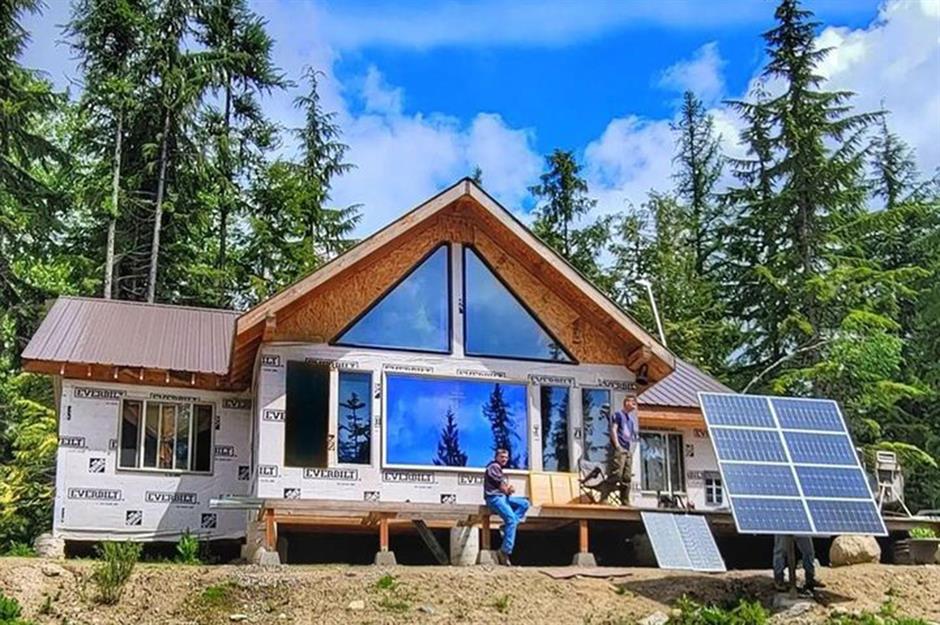
Describing themselves as “gluttons for punishment,” the Mulder family left their mountain home in 2020 and constructed a brand-new, off-grid abode, called Selah Acres, which features many of the same sustainable energy workarounds as their previous build.
A family living in the mountains of North Idaho
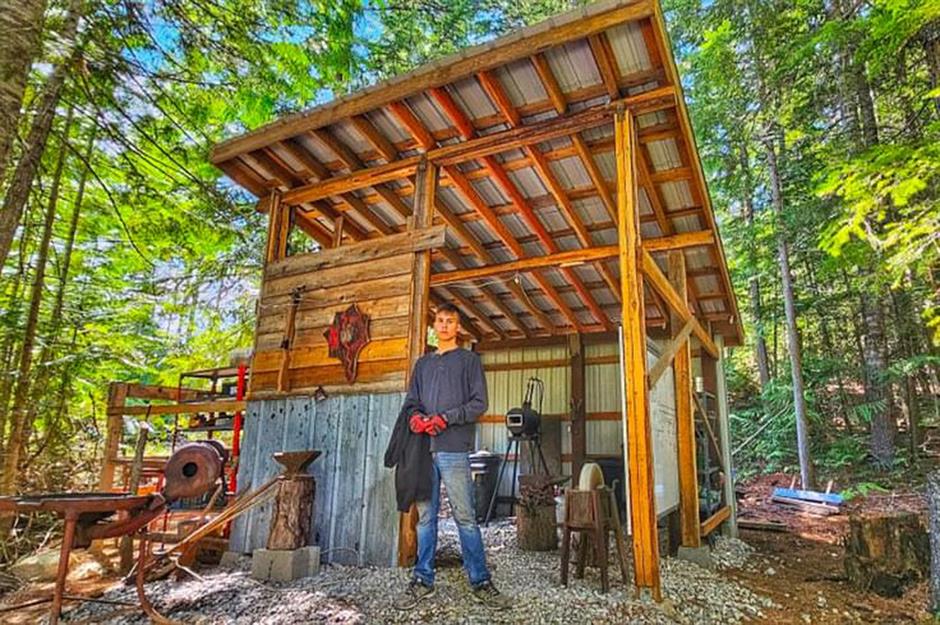
An impressive feature is the blacksmith shop for her son, DJ, an aspiring metalworker. There is also room for a spacious barn and a garden, giving the family flocks lots of room to spread out.
The surrounding landscape is perfect for hiking, fishing and any other outdoor activity you can think of. The family work together to live comfortably through whatever weather the Idaho mountains throw at them.
A family living in the mountains of North Idaho
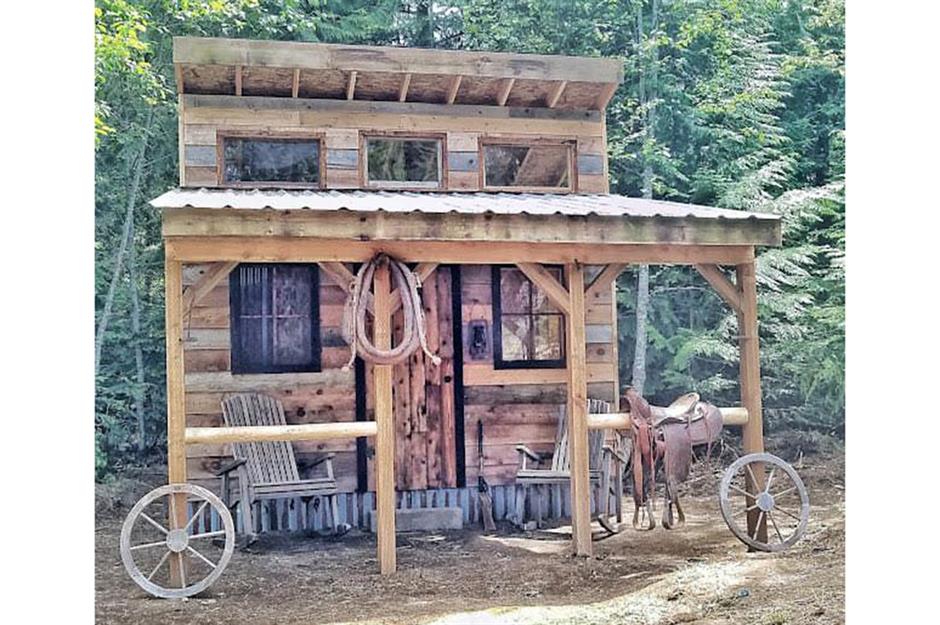
The new house also has some exciting features, like this adorable duck coop, which Nikki described as something akin to the “Wild West meets The Shire.” It even comes with a hitching post!
The boys are homeschooled so the family has plenty of time to spend together enjoying the mountains, making tools and crafts, preparing eggs for sale and more. The couple say they have no desire to return to life on-grid and we don't blame them.
Love this? Check out these tough wilderness homes that can survive any challenge
Comments
Be the first to comment
Do you want to comment on this article? You need to be signed in for this feature